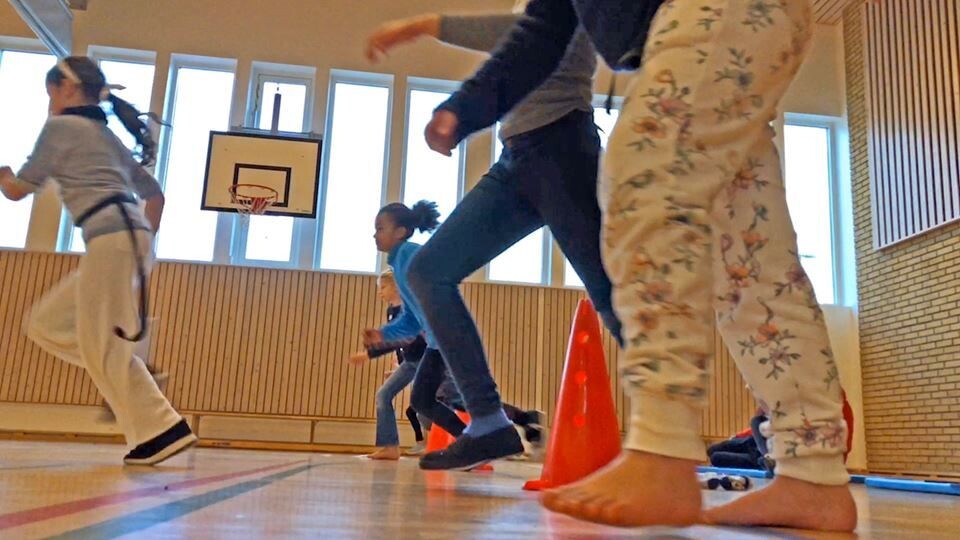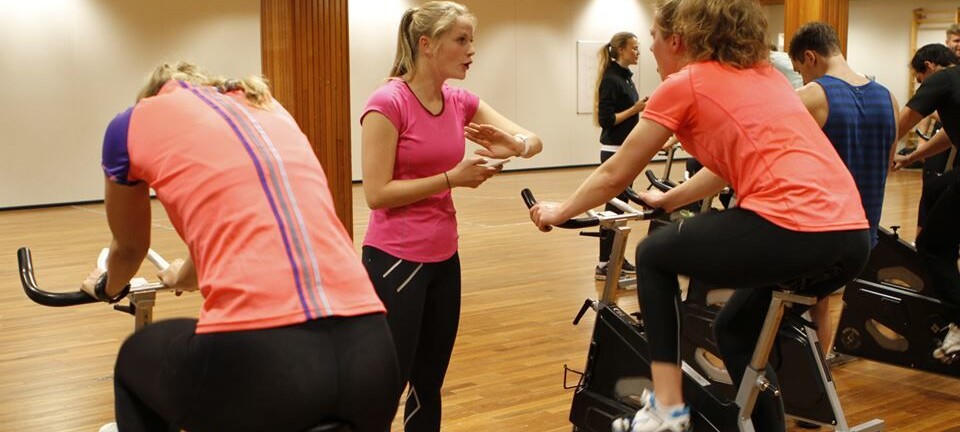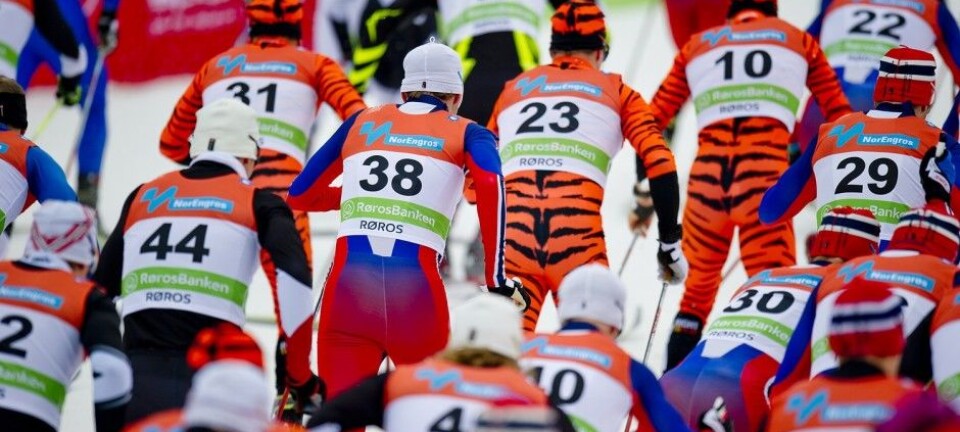This article was produced and financed by The Norwegian School of Sport Sciences - read more

Youth are inactive for too long
Children and adolescents have not become more active, despite the clear goal to increase physical activity. The World Health Organization’s goal of more physical activity to curb many diseases is facing failure.
This is one of the conclusions from the last so-called “UngKan3” survey conducted by the Norwegian School of Sport Sciences (NIH).
Altogether, more than 9,000 children and adolescents have been measured and tested in three similar surveys in 2005, 2011 and 2018.
Children from all over Norway have been measured and tested in the survey. All participants have worn an activity tracker for an entire week.
In addition, they have been measured for muscle strength and endurance. Students from NIH conducted the tests, many in conjunction with their own education.
Are less physically active

"The fact that young people are becoming less active with age is a matter of concern. We saw the same thing in 2005 and 2011," says Jostein Steene-Johannessen, project manager for Ungkan3 and associate professor of athletic sciences at NIH.
It is a declared goal of both the Norwegian Directorate of Health (HDIR) and the World Health Organization (WHO) that young people need to become more active.
"This hasn't happened. Young people are no more physically active now than they were before. In fact, it seems that 9-year-olds are less active today than they were 7 and 13 years ago. The effort to motivate them has not yet succeeded," he says.
Want enhanced health
"Young people should be physically active. It is important for normal development, growth and health – even when they get older," says Ulf Ekelund.
He is a professor at the Norwegian School of Sport Sciences (NIH) and is a researcher at the Institute of Public Health (FHI), the competence agency that NIH has collaborated with to conduct the survey.
People who are inactive as adolescents may run a greater risk of incurring lifestyle illnesses such as cardiovascular disease, cancer and diabetes as they grow older.
This is the basis for the goals that the authorities have adopted: The Directorate of Health says adolescents should be involved in "moderate to hard" physical activity at least one hour a day.
Ungkan figures show that about half the 15-year-olds are less active than that.
The World Health Organization (WHO) recommends that the proportion failing to manage the one-hour target should be lowered by 10 percent by 2025.
Young boys best, adolescent girls worst
The 2018 figures show that the youngest boys are most active and in the best physical shape, while 15-year-olds, especially girls, are physically exercising least.
Among the six-year-old boys, 94 percent satisfy the recommended one-hour criterion. Among 15-year-old girls, only 40 percent meet the criterion.
Only the 9-year-old boys are slightly less active. Otherwise, the figures show that children and young people are about as active now as when the first Ungkan survey was conducted in 2005.
"There has been no positive development. We are in no position to reach the goal set by WHO," says Steene-Johannessen.
Can be improved - many must take responsibility
But the survey also reveals that it doesn’t take much to make children and young people sufficiently active.
For example, if you increase the "moderate to hard" activity every day by only ten minutes, many more 9 and 15-year-olds will surpass the one-hour goal: The 9-year-olds will go from 72 to 87 percent and 15-year-olds from 46 to 65 percent.
"More physical activity in schools is a necessary measure if we are to succeed," Steene-Johannessen says.
He believes that both parents and sports teams can contribute.
"For parents, it's about letting the kids walk or ride a bicycle to activities. Sports teams can do more to retain young people, to prevent them from dropping out. Perhaps more all-around sports or "unorganized" activities might work. Whatever the case may be, the activities must be on the young people’s premises."
Computer games not so harmful
The only young people who have become less active in recent years are nine-year-old boys.
The two researchers believe one should pay special attention to these boys. They have already become less active than before, and there is a risk that they will peter out even further as they get older.
To get answers, the researchers will need more frequent surveys, preferably every three years.
But on the other hand, isn’t it positive that the data age has not "ruined everything" for the young people, as the sceptics predicted?
"There hasn’t been any catastrophic impact in terms of level of activity, at any rate. But it also means that there is more time to devote to physical activities. However, if we want to boost physical activity among young people, it has to be meaningful and it has to be fun", Jostein Steene-Johannessen says.
THE UNGKAN3 SURVEY SHOWS:
- Ungkan3 shows that since 2005, most children have not come any closer to meeting the World Health Organization’s (WHO’s) recommended goal of one hour of moderate to hard activity every day.
- Young people are becoming less active with age. Young boys are most active; 15-year-old girls least active.
- Irrespective of age, boys are more active than girls. Six-year olds, however, are sedentary about half of the day.
- If young people prolong "moderate to hard" activity by 10 minutes a day, 95 percent of the 6-year-old boys would meet WHO’s activity goal. Girls of the same age need to increase activity by 20 minutes a day to achieve the same goal. The 15-year-olds lag 30 minutes a day behind in reaching the recommended one-hour goal.
—————
Read more about this study (in Norwegian) at forskning.no


































